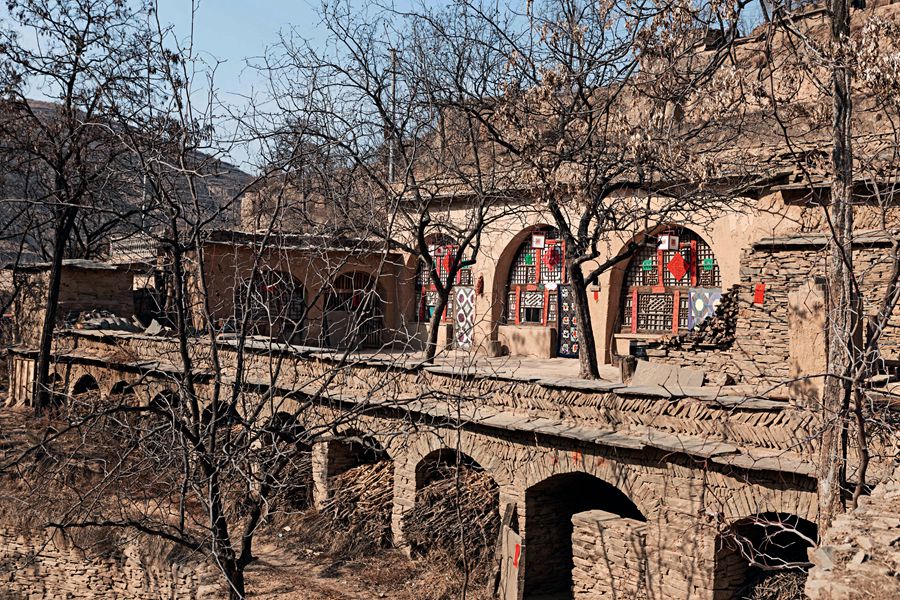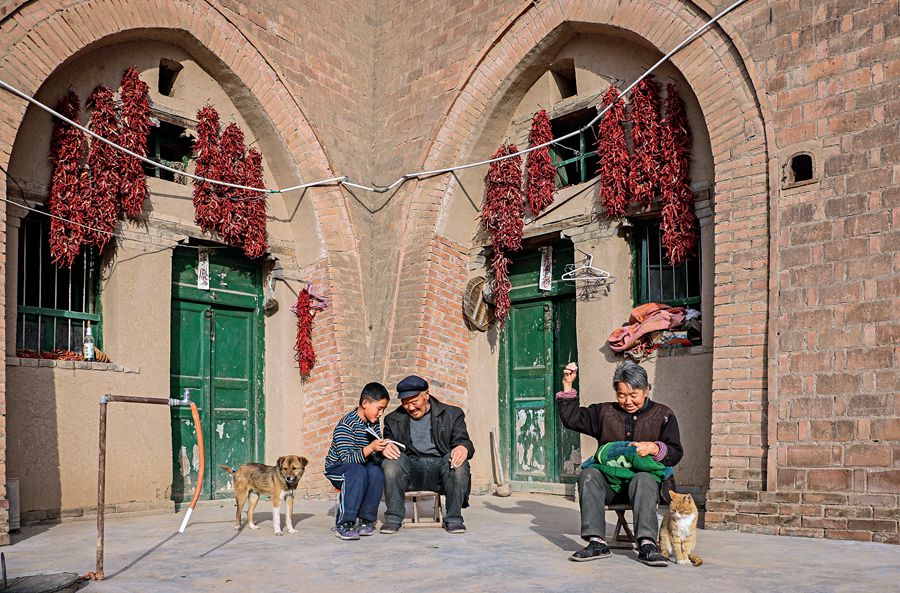THE people who lived on the Loess Plateau in western-central China in the past, when faced with the thickness of the Loess formation often reaching several kilometers in depth, displayed great creativity in utilizing the advantages of the surrounding geography to make cave dwellings, creating what is now called “green cave dwellings.” According to architectural studies, these cave dwellings are a kind of earth shelter. With natural properties, like poor water permeability and stable in formation, the Loess Plateau is an ideal environment for the development of cave dwellings. In addition, the natural geographical conditions of remaining dry in the rain, warm in winter and cool in summer, and having few trees in the area all created a perfect environment for the development of cave dwellings.
Origins of Cave Dwellings
The history of earthen cave dwelling architecture goes back as far as the middle to late Neolithic Age. Archeologists have discovered several locations of ancient cave dwellings during the Longshan Culture period (extending back almost 4,000 years) in Weijialou, Hengshan County, Shaanxi Province. These findings reveal that according to the historical timeline of the development of technology and production instruments, the people who lived in those cave dwellings during that period had already entered an era where humans had begun to live in semi-manmade cave dwellings.

A traditional cave dwelling in Shuangshui Village, Yulin City, Shaanxi Province.
Cave dwellings can be found throughout the provinces of Shanxi, Shaanxi, Gansu, Henan and Hebei, but the most representative cave dwellings are located in the northern area of Shaanxi Province, especially Yan’an and Yulin. The natural-style cave dwellings in the loess region display the principles of harmonious coexistence of humans with nature, the simplicity of construction designs, and frugality in use of material. The architecture itself is also sturdy and durable, and since it was very comfortable to live in, it was widely used by the local people of the day.
The Culture of Cave Dwellings
The cave dwellings found in northern Shaanxi consist of three main types: stone, brick and earth. Of these three types, the earth cave dwelling exhibits the most unique folk culture of northern Shaanxi. The earth cave dwellings were either carved out of a cliff face on a section of the Loess Plateau one by one in a row, or caves were made by digging into the walls of a large square-shaped pit dug into the ground, forming a quadrangle courtyard. To some of the caves, people added stone slabs or bricks on the inside to prevent the walls from collapsing, while some people built brick walls on the outside of the cave to protect the surface of the cliff. Some of the rather large-scale cave dwellings had rooms added on at the base of the cliff, creating a compound and cave courtyard.
When building cave dwellings, people usually built the structure according to the shape of the mountain, selecting a location that was dry and had good lighting. Often caves had three to five holes carved in the front facade, then according to the topography of the area, dug out one to three holes in the mountain to the side of the front facade. The height of an average cave dwelling was four meters high, three meters wide and 10 meters deep into the mountain. The ceiling of the main cave in the front facade was usually slightly higher than the others, and being the main room, it belonged to the family elders.
Inside the cave, a kang, or heatable brick bed, was built next to the window, and a chimney stack was built outside the door. By connecting the kang and the cooking stove together, the released smoke from the stove was funneled out through the kang. In this way, the air in the cave was kept clean, the need for additional fires to heat up the cave was eliminated, and energy was saved. On the walls around the kang, local people in northern Shaanxi drew paintings of various themes using bright colors. The original purpose of this art was to prevent the walls from pealing or getting damaged from exposure. But later, this style of painting became a vibrant folk art.

Two elderly people enjoy the sunshine with their grandson in the courtyard of a cave dwelling.
The vault structure of the cave dwellings dispersed the pressure of the roof into two parts, making the ceiling very stable. Some cave dwellers, in an effort to increase the secureness of the structure, would use wooden beams to support the crown of the cave, thus making a cave dwelling that could survive for several generations. Besides this, the arch roof design increased the space in the room, creating a comfortable living area for the residents.
From the outside, traditional cave dwellings look like a circular arch, which adds a bright and lively element to the monotonous landscape of the Loess Plateau. Windows were built above the door of the cave to allow sunshine to penetrate and light up the inner area of the cave during winter.
Cave-Warming Celebrations
On the day the construction of a cave dwelling was completed, neighbors and friends came together to celebrate the event by holding a grand ceremony. The local people call this kind of celebration the “cave warming.”
When people arrived, the owner of the new cave would hold a banquet to entertain all the guests. After the banquet was finished, the owner would present gifts of red quilt covers and shirts to the workers who helped build the cave in appreciation of their work. It is said that the housewarming ceremony can disperse the chillness of the long, cold winter in the region.
With the rapid urbanization of Chinese villages, people’s living conditions have been greatly improved. As a result, the majority of cave dwellings have been abandoned, and the traditional construction techniques of building cave dwellings have slowly become a memory of architectural culture from the past.
GUO ZHIDONG is a researcher of traditional culture at the No.93 Courtyard Museum.

